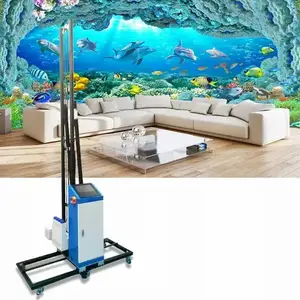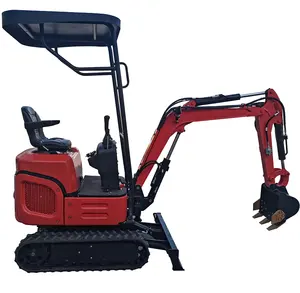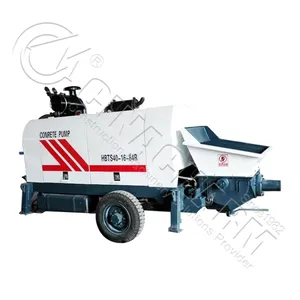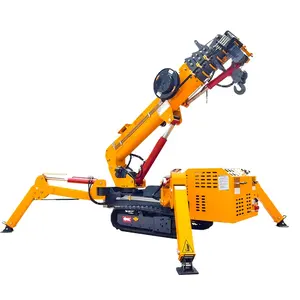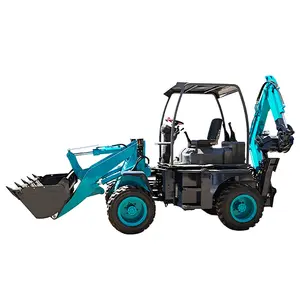Phổ biến trong ngành của bạn






6 tấn underlift kéo xe tải với điều khiển từ xa ánh sáng trung bình và nặng nhiệm vụ phá hủy xe tải cơ thể
9.000,00 US$ - 9.500,00 US$
Đơn hàng tối thiểu: 1 Đơn vị
Vận chuyển mỗi chiếc: 3.040,00 US$







Thương Hiệu Dongfeng 5T Double Decker Tow Truck 4X2 Rotary Người Phá Hủy Tow Truck 10ton Tow Truck Dollys Để Bán Trung Quốc Diesel Euro 3
13.000,00 US$ - 28.000,00 US$
Đơn hàng tối thiểu: 1 Đơn vị







3 tấn nhiệm vụ ánh sáng người phá hủy cơ thể mini Tow Truck
5.200,00 US$ - 5.600,00 US$
Đơn hàng tối thiểu: 1 Đơn vị
Vận chuyển mỗi chiếc: 2.560,00 US$







3 Trục/4 Trục Thiết Bị Hạng Nặng 80 Tấn Xe Kéo Vận Chuyển Có Giường Thấp
6.500,00 US$ - 7.500,00 US$
Đơn hàng tối thiểu: 10 Cái





Nhật Bản nhập khẩu đường cao tốc 4x2 4 tấn đến 5 tấn 5600mm phẳng đầy đủ ngồi xuống Xe tải kéo phá hủy
15.500,00 US$
Đơn hàng tối thiểu: 1 Bộ
Vận chuyển mỗi chiếc: 120,00 US$






3ton 5ton hai chiếc xe tải nhỏ phẳng phá hủy kéo xe tải giá rẻ
16.500,00 US$ - 19.800,00 US$
Đơn hàng tối thiểu: 1 Đơn vị






Sử Dụng Phẳng Người Phá Hủy Howo Kéo Xe Tải 5 Tấn 7 Tấn Khẩn Cấp Trượt Rotator Người Phá Hủy Tow Xe Tải Để Bán
18.168,00 US$ - 18.658,00 US$
Đơn hàng tối thiểu: 1 Đơn vị
Vận chuyển mỗi chiếc: 6.000,00 US$






New Nhỏ Wheel Lift 4X2 2Ton 3Ton 4Ton 5Ton Ánh Sáng Phẳng Người Phá Hủy Xe Tải Cuộn Lại Tow Truck Nhật Bản
19.800,00 US$ - 20.300,00 US$
Đơn hàng tối thiểu: 1 Bộ






Xe Tải Phá Hủy Kéo Phẳng 3ton 5 Tấn Hạng Nhẹ Của Nhà Sản Xuất Bán Chạy
9.000,00 US$ - 9.800,00 US$
Đơn hàng tối thiểu: 1 Đơn vị






Giá rẻ foton 4x2 EURO 3 5 tấn phẳng kéo xe tải phá hủy với cần cẩu
15.000,00 US$ - 16.000,00 US$
Đơn hàng tối thiểu: 1 Đơn vị






CLW 3 tấn dưới nâng rollback phục hồi cứu hộ khối tow xe tải 4 tấn 5 tấn 6 tấn phẳng nền tảng xe tải người phá hủy giá
10.800,00 US$ - 27.800,00 US$
Đơn hàng tối thiểu: 1 Đơn vị
Các tìm kiếm liên quan:
kéo máy baysử dụng phẳng kéo xe tảinhật bản phẳng kéo xe tảixe tải kéo đôi phẳng0 độ phẳng kéo xe tảixe tải kéo phẳng jacgiá xe tải kéo phẳngdongfeng phẳng kéo xe tảiisuzu phẳng kéo xe tảikéo xe tải phẳng để bán sử dụngxe tải kéo dfacxe kéo kỹ thuật legokéo xe tải phẳngford f650 kéo xe tảitrung quốc shacman kéo xe tải






Xe Tải Lật Đổ Hoàn Toàn 5 Tấn 6 Tấn Nhật Bản 1SUZU 4X2 3 Tấn 5 Tấn Xe Tải Kéo Phẳng Cứu Hộ Phục Hồi
28.500,00 US$ - 29.500,00 US$
Đơn hàng tối thiểu: 1 Cái
Vận chuyển mỗi chiếc: 26.827,00 US$






Phá hủy chiếc xe tải nhà máy cung cấp Nhật Bản hai trục 5ton phẳng tow xe tải
25.999,00 US$
Đơn hàng tối thiểu: 1 Bộ






Hot bán 5 tấn kéo xe tải sinotruk HOWO 4x2 4 tấn phẳng phá hủy kéo xe tải
4.600,00 US$ - 6.800,00 US$
Đơn hàng tối thiểu: 1 Đơn vị






ISUZU 4x2 giường phẳng phá hủy Xe tải kéo phẳng nền tảng phục hồi Xe tải kéo 5ton để bán
39.900,00 US$
Đơn hàng tối thiểu: 1 Đơn vị






6 Wheeler Nhiệm Vụ Ánh Sáng Nhỏ 4X2 Diesel FOTON Aumark 5ton Đường Phẳng Tow Truck Giá
16.500,00 US$ - 16.800,00 US$
Đơn hàng tối thiểu: 1 Bộ






Giường phẳng 3ton 4t 5 tấn kéo xe tải người phá hủy cơ thể 3ton-10tons nghiêng khay xe khẩn cấp phẳng người phá hủy kéo xe tải Nhật Bản để bán
36.000,00 US$ - 37.000,00 US$
Đơn hàng tối thiểu: 1 Đơn vị






Giá bán buôn jmc4x2 5ton phẳng người phá hủy kéo xe tải phục hồi xe phẳng kéo xe đường trở ngại thanh toán bù trừ xe tải
7.900,00 US$ - 8.600,00 US$
Đơn hàng tối thiểu: 1 Đơn vị






Nhật Bản nóng bán bánh xe nâng 5ton phẳng Tow Truck
22.200,00 US$ - 22.800,00 US$
Đơn hàng tối thiểu: 1 Đơn vị
Vận chuyển mỗi chiếc: 4.000,00 US$






Howo 6 bánh xe tải gắn người phá hủy/phẳng kéo xe tải 5 tấn để bán
17.500,00 US$ - 18.000,00 US$
Đơn hàng tối thiểu: 1 Bộ






Sinotruk HOWO 4X2 5ton Máy Xúc Loader Tải Tow Người Phá Hủy Xe Tải Chở Hàng Phẳng
21.450,00 US$
Đơn hàng tối thiểu: 1 Đơn vị






Trung Quốc 4*2 sử dụng 5ton 10ton jac ISUZU đường xe phẳng kéo xe tải phá hủy kéo xe tải để bán
4.000,00 US$ - 6.500,00 US$
Đơn hàng tối thiểu: 1 Đơn vị






Mới Nhỏ 5ton phẳng rotator kéo xe tải gắn 4ton Crane wrecker thủy lực winch
25.000,00 US$ - 27.576,00 US$
Đơn hàng tối thiểu: 1 Đơn vị






Sinotruk HOWO giá rẻ 4x2 4 tấn tự tải giường phẳng phục hồi xe tải với 5 tấn cần cẩu phẳng Tàu phá hủy kéo xe tải
19.000,00 US$
Đơn hàng tối thiểu: 1 Đơn vị






Dongfeng 5ton Đường Cứu Hộ Phẳng Phá Hủy Tow Truck Ở Kenya
22.000,00 US$ - 25.000,00 US$
Đơn hàng tối thiểu: 1 Đơn vị






Chất lượng tốt 5ton DIESEL phẳng phá hủy Xe tải kéo Nhật Bản để bán
9.300,00 US$ - 9.800,00 US$
Đơn hàng tối thiểu: 1 Bộ






Dongfeng 5ton Phẳng Tow Truck Nền Tảng Đường Cứu Hộ Xe Phá Hủy Tow Truck Để Bán
15.800,00 US$ - 23.000,00 US$
Đơn hàng tối thiểu: 1 Đơn vị
Vận chuyển mỗi chiếc: 1.155,00 US$






Mới 4x2.5ton cần cẩu mới phẳng đường phá hủy Xe tải kéo
11.414,00 US$ - 16.850,00 US$
Đơn hàng tối thiểu: 10 Đơn vị






Nhà sản xuất sản xuất nhiệm vụ ánh sáng 3ton 5ton phẳng kéo người phá hủy kéo xe tải
17.100,00 US$ - 17.200,00 US$
Đơn hàng tối thiểu: 1 Cái






Hot bán sinotruk HOWO 4x2 4 tấn phẳng phá hủy kéo xe tải 5 tấn kéo xe tải
4.600,00 US$ - 6.800,00 US$
Đơn hàng tối thiểu: 1 Đơn vị






ISUZU 4x2 giường phẳng phá hủy Xe tải kéo phẳng nền tảng phục hồi Xe tải kéo 5ton để bán
13.000,00 US$ - 15.000,00 US$
Đơn hàng tối thiểu: 1 Đơn vị






Keeyak howo phẳng kéo xe tải sinotruk 110hp euro 5 diesel 5ton nhiệm vụ ánh sáng người phá hủy kéo xe tải chất lượng cao để bán
5.550,00 US$ - 6.557,00 US$
Đơn hàng tối thiểu: 1 Cái
Vận chuyển mỗi chiếc: 216.050,00 US$






Nhật Bản ISUZU 4*2 3ton 5ton rollback xe tải phục hồi đường phẳng phá hủy Xe tải kéo
19.500,00 US$ - 20.500,00 US$
Đơn hàng tối thiểu: 1 Đơn vị






Bán Xe Kéo Xe Tải Kéo Máy Quay Phẳng 4*2 5 Tấn Xe Tải Kéo Phá Hủy
10.000,00 US$ - 11.000,00 US$
Đơn hàng tối thiểu: 1 Mẫu Anh
Vận chuyển mỗi chiếc: 34.998.000,00 US$





Thương hiệu Mới faw người phá hủy kéo xe tải 4x2 Trung Quốc người phá hủy phẳng 3ton 4ton 5ton người phá hủy cơ thể
2.722,00 US$ - 3.522,00 US$
Đơn hàng tối thiểu: 1 Bộ






Wehbe Nặng Metro Tow Xe Tải 3ton 5ton 9ton Tùy Chỉnh Người Phá Hủy Kéo Cơ Thể 0 Độ Phẳng Người Phá Hủy Để Bán
49.800,00 US$ - 50.000,00 US$
Đơn hàng tối thiểu: 1 Đơn vị






Dongfeng 5ton phẳng Tow Truck nền tảng đường cứu hộ xe ô tô người phá hủy Tow Truck để bán
22.800,00 US$ - 23.000,00 US$
Đơn hàng tối thiểu: 1 Đơn vị





Nhật Bản 1suzu 4x2 3ton 5ton 6ton đầy đủ xuống rollback Xe Tải Cứu hộ phục hồi người phá hủy phẳng kéo xe tải
10.000,00 US$
Đơn hàng tối thiểu: 2 Cái






PHẲNG KÉO xe tải đường người phá hủy xe tải nhà máy trực tiếp 4ton 5ton 8ton 10ton 20ton 30ton 100ton wrecker Tow Truck body Kit
2.999,00 US$ - 3.999,00 US$
Đơn hàng tối thiểu: 1 Đơn vị
Các danh mục hàng đầu
Giới thiệu về xe tải kéo phẳng 5ton
Khi bạn cần nâng một lượng đất nặng, a. xe tải kéo phẳng 5ton là điều bắt buộc trên trang web việc làm của bạn .. xe tải kéo phẳng 5ton là những phương tiện di chuyển trên đất phổ biến có gầu, tay đòn, ca-bin quay và đường ray di chuyển. Các thành phần này cung cấp sức mạnh đào và tính cơ động vượt trội, cho phép thiết bị hạng nặng này thực hiện nhiều chức năng khác nhau, từ đào hào và phá lỗ đến nâng chất thải và đào mỏ. Tại Alibaba.com, bạn sẽ thấy hiệu suất phi thường. xe tải kéo phẳng 5ton với giá cả phải chăng.
Có nhiều loại khác nhau. xe tải kéo phẳng 5ton phù hợp cho các mục đích khác nhau. Các máy nhỏ hơn xử lý các chức năng đào và khoan, trong khi lớn hơn. xe tải kéo phẳng 5ton có các công cụ khác nhau cho các dự án nặng. Trong khi mua. xe tải kéo phẳng 5ton, bạn sẽ cần phải xem xét kích thước và tốc độ của nó cũng như các điều kiện làm việc, chẳng hạn như diện tích và loại đất.
Tại Alibaba.com, bạn sẽ tìm thấy sáng tạo và công nghệ cao. xe tải kéo phẳng 5ton do các chuyên gia nổi tiếng trên thế giới sản xuất. Những điều tuyệt vời. xe tải kéo phẳng 5ton đóng một vai trò quan trọng trong quá trình đô thị hóa của cảnh quan bằng cách giúp đặt nền móng xây dựng vững chắc. Trong nền tảng này, bạn sẽ tìm thấy một loạt các loại lớn, trung bình và nhỏ. xe tải kéo phẳng 5ton phù hợp với nhiều ứng dụng trải dài trong các ngành khác nhau như đường bộ, khai thác mỏ, cơ sở hạ tầng, đường sắt, cơ sở hạ tầng đô thị, bất động sản, v.v.
Tại Alibaba.com, bạn được đảm bảo tìm cái tốt nhất. xe tải kéo phẳng 5ton và các ưu đãi phù hợp với ngân sách của bạn. Với tư cách là người mua cá nhân hoặc người bán buôn đang tìm mua sản phẩm hoạt động tốt nhất. xe tải kéo phẳng 5ton với số lượng lớn, bạn được đảm bảo giá tốt nhất khi mua những sản phẩm này.
Có nhiều loại khác nhau. xe tải kéo phẳng 5ton phù hợp cho các mục đích khác nhau. Các máy nhỏ hơn xử lý các chức năng đào và khoan, trong khi lớn hơn. xe tải kéo phẳng 5ton có các công cụ khác nhau cho các dự án nặng. Trong khi mua. xe tải kéo phẳng 5ton, bạn sẽ cần phải xem xét kích thước và tốc độ của nó cũng như các điều kiện làm việc, chẳng hạn như diện tích và loại đất.
Tại Alibaba.com, bạn sẽ tìm thấy sáng tạo và công nghệ cao. xe tải kéo phẳng 5ton do các chuyên gia nổi tiếng trên thế giới sản xuất. Những điều tuyệt vời. xe tải kéo phẳng 5ton đóng một vai trò quan trọng trong quá trình đô thị hóa của cảnh quan bằng cách giúp đặt nền móng xây dựng vững chắc. Trong nền tảng này, bạn sẽ tìm thấy một loạt các loại lớn, trung bình và nhỏ. xe tải kéo phẳng 5ton phù hợp với nhiều ứng dụng trải dài trong các ngành khác nhau như đường bộ, khai thác mỏ, cơ sở hạ tầng, đường sắt, cơ sở hạ tầng đô thị, bất động sản, v.v.
Tại Alibaba.com, bạn được đảm bảo tìm cái tốt nhất. xe tải kéo phẳng 5ton và các ưu đãi phù hợp với ngân sách của bạn. Với tư cách là người mua cá nhân hoặc người bán buôn đang tìm mua sản phẩm hoạt động tốt nhất. xe tải kéo phẳng 5ton với số lượng lớn, bạn được đảm bảo giá tốt nhất khi mua những sản phẩm này.
